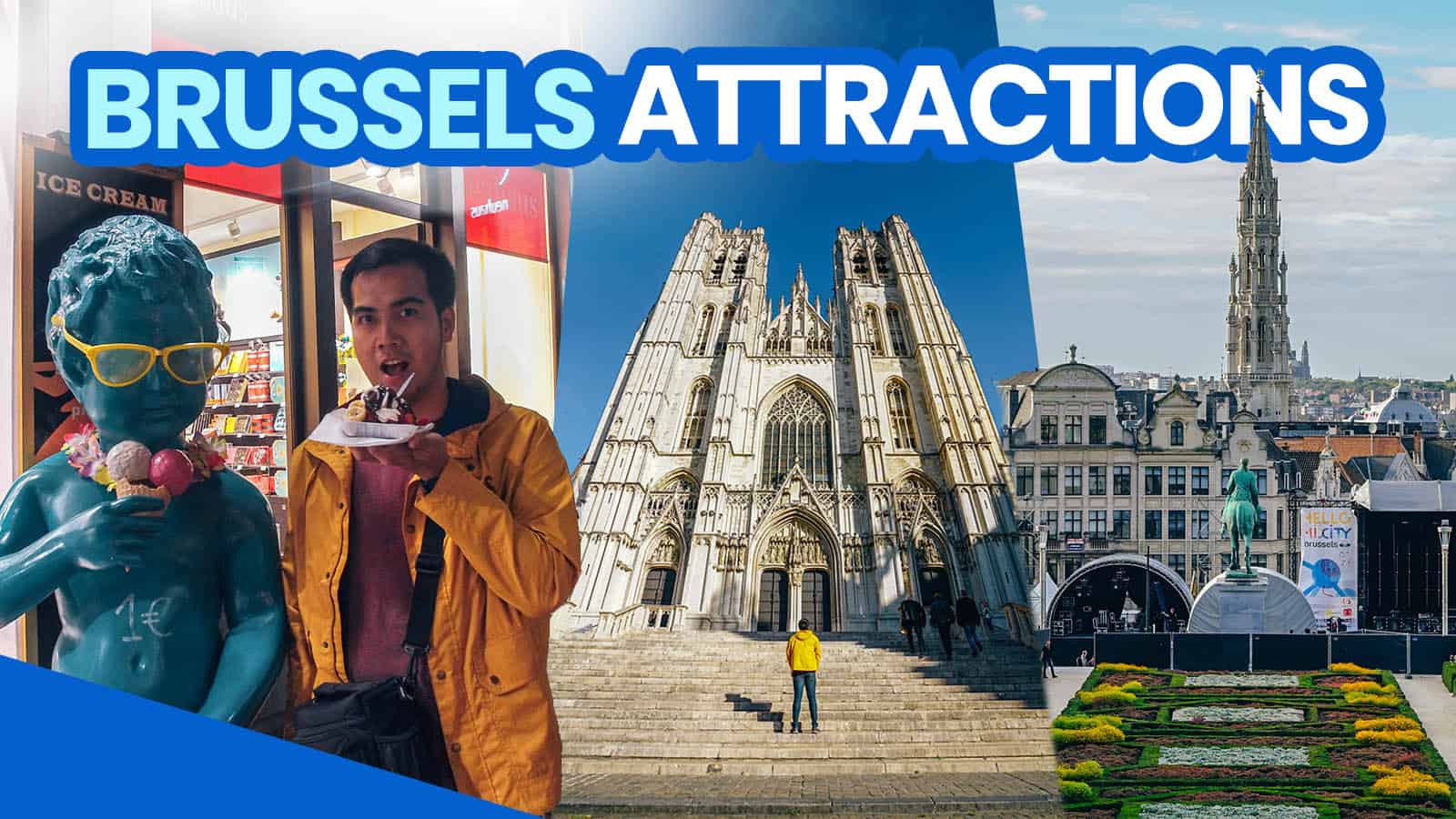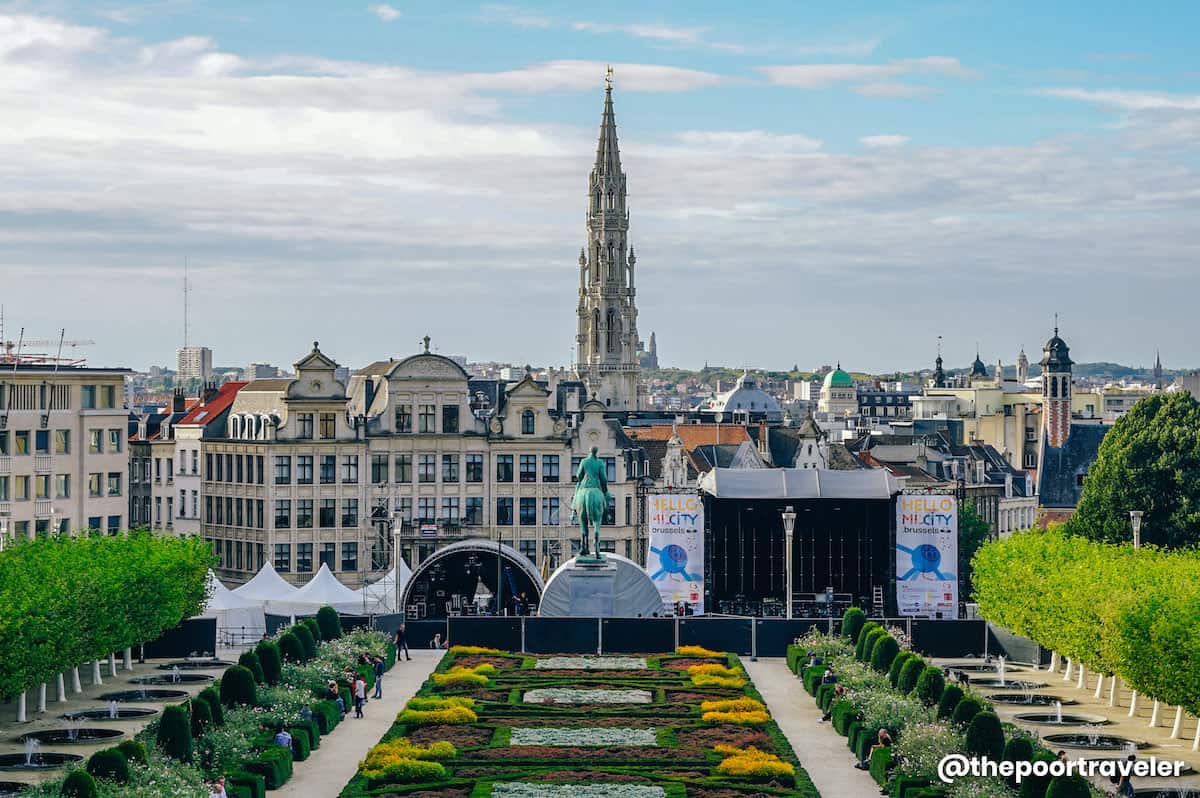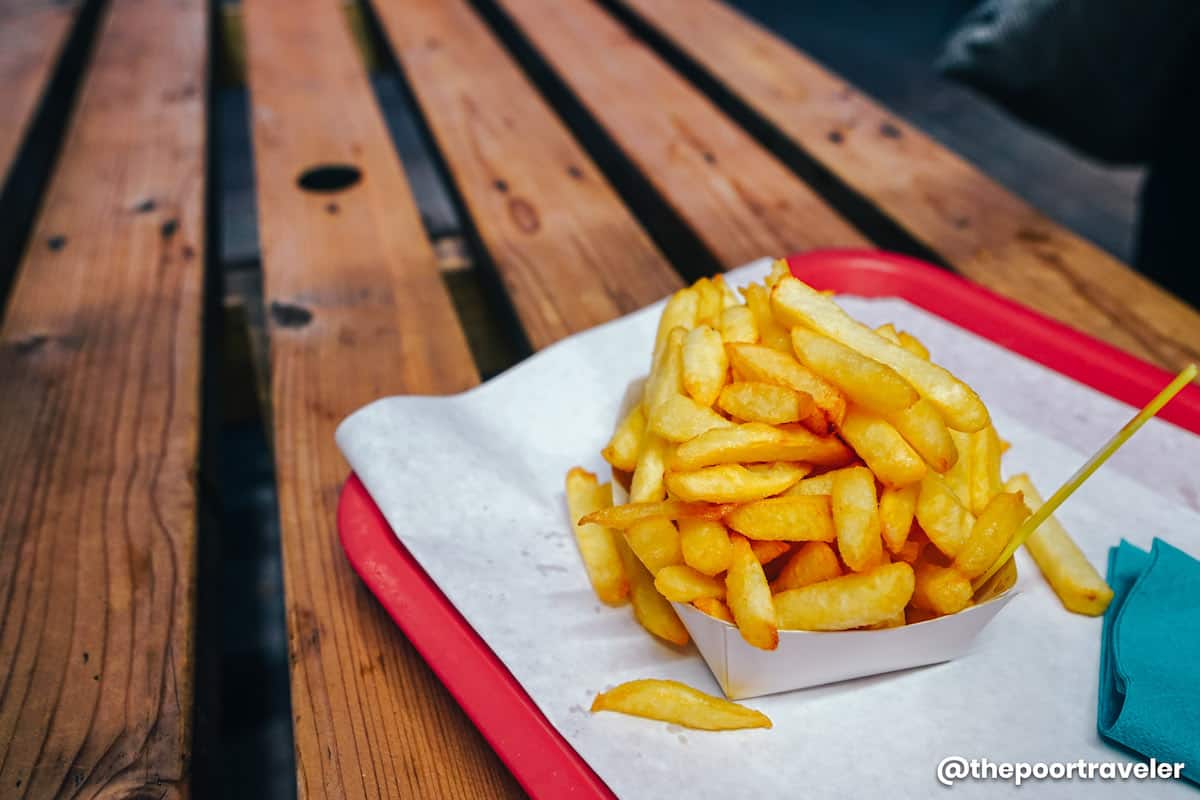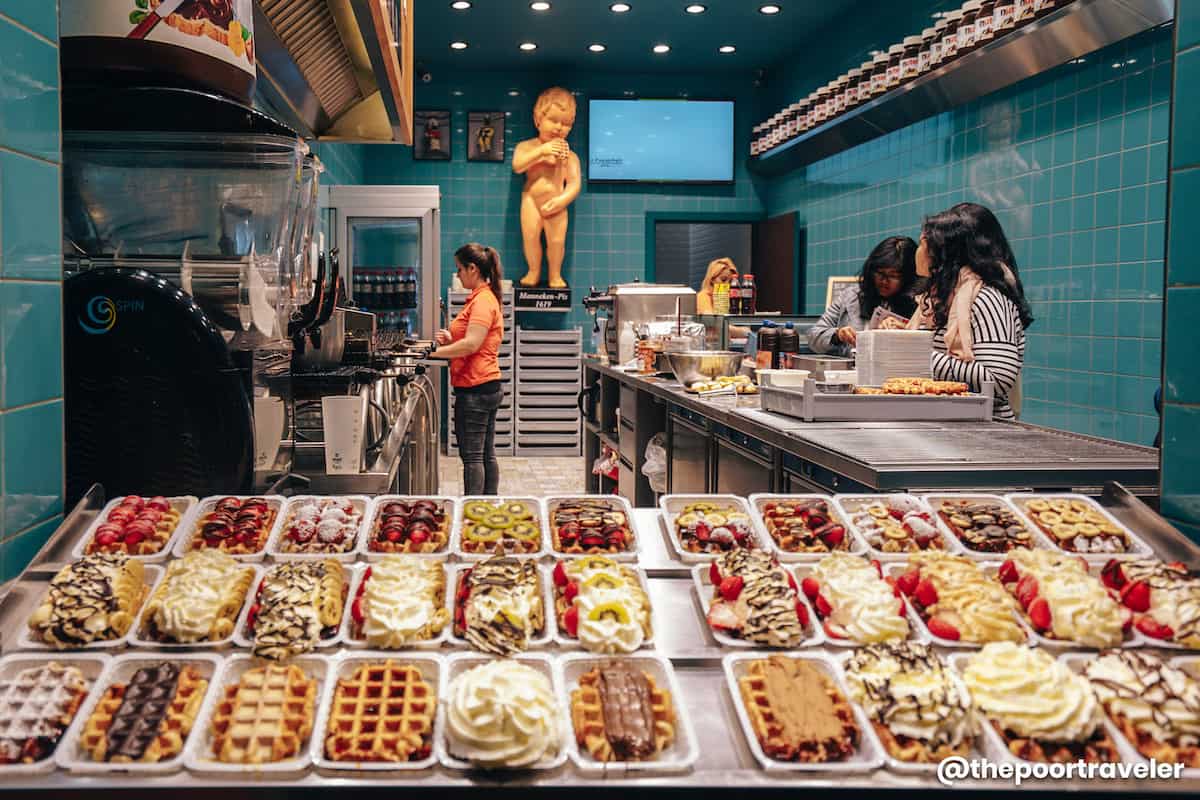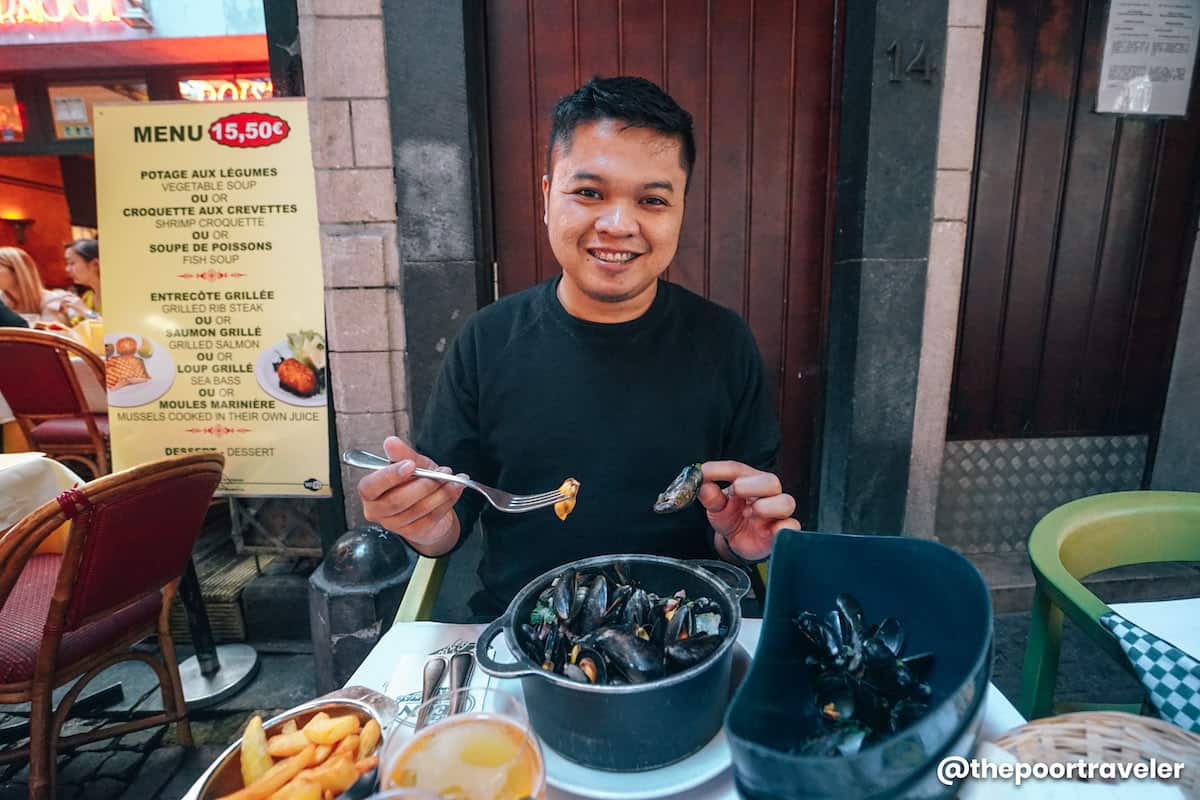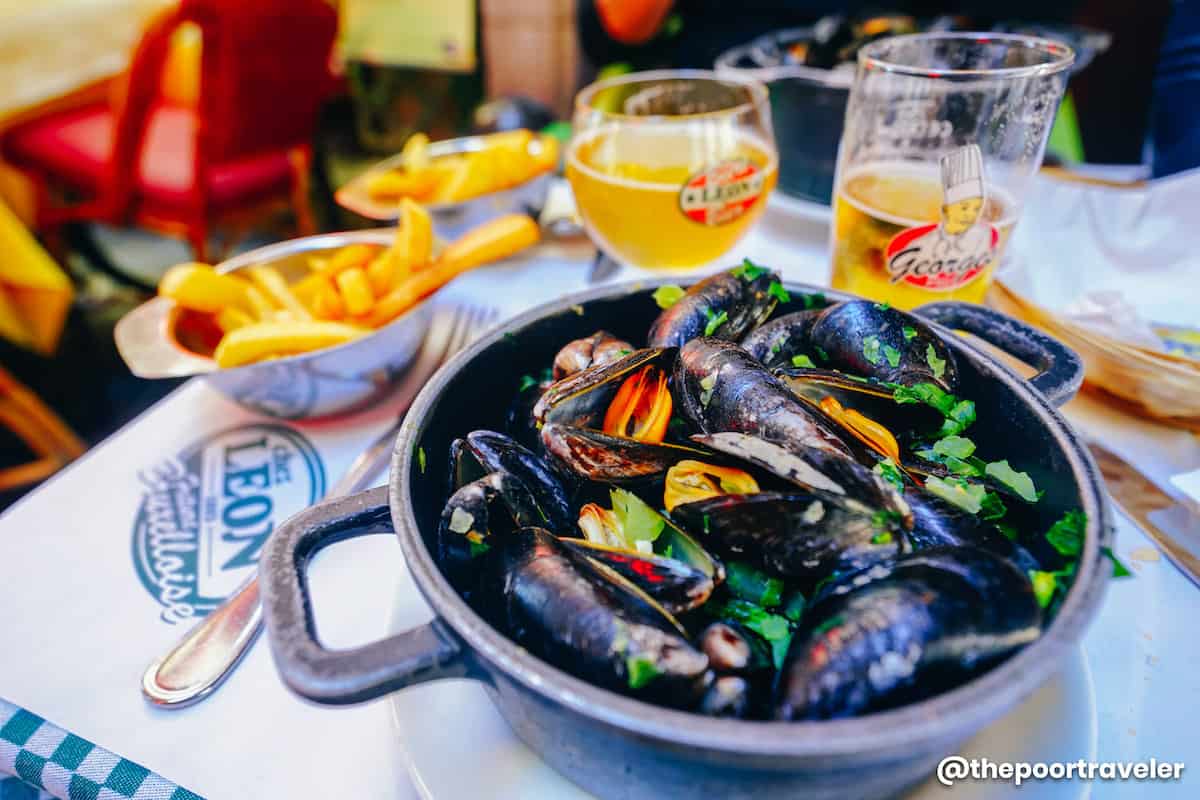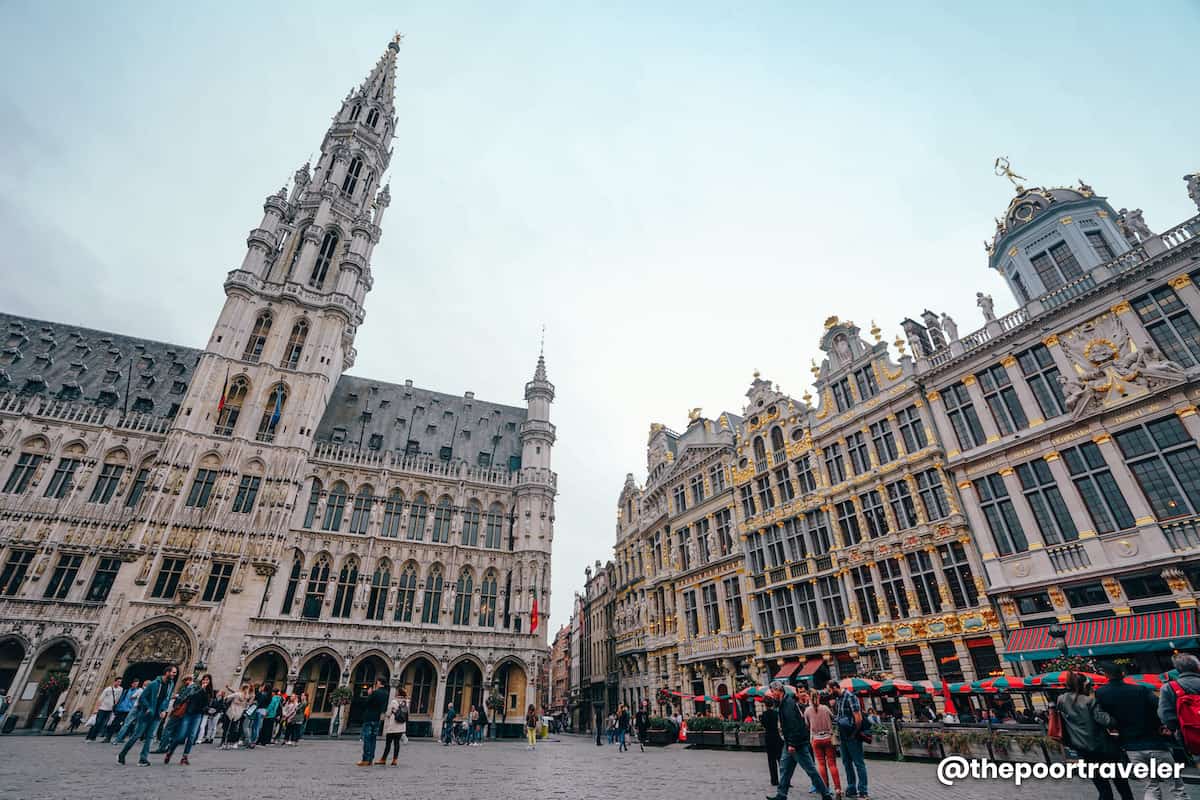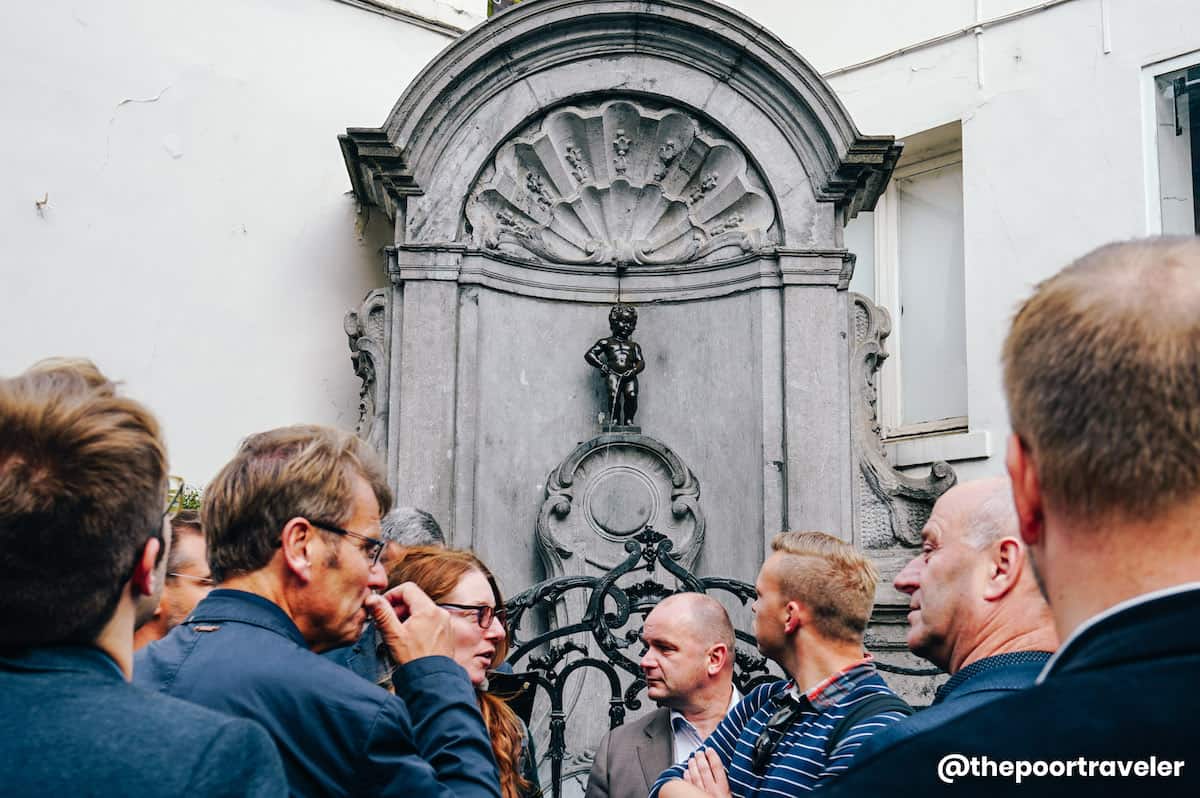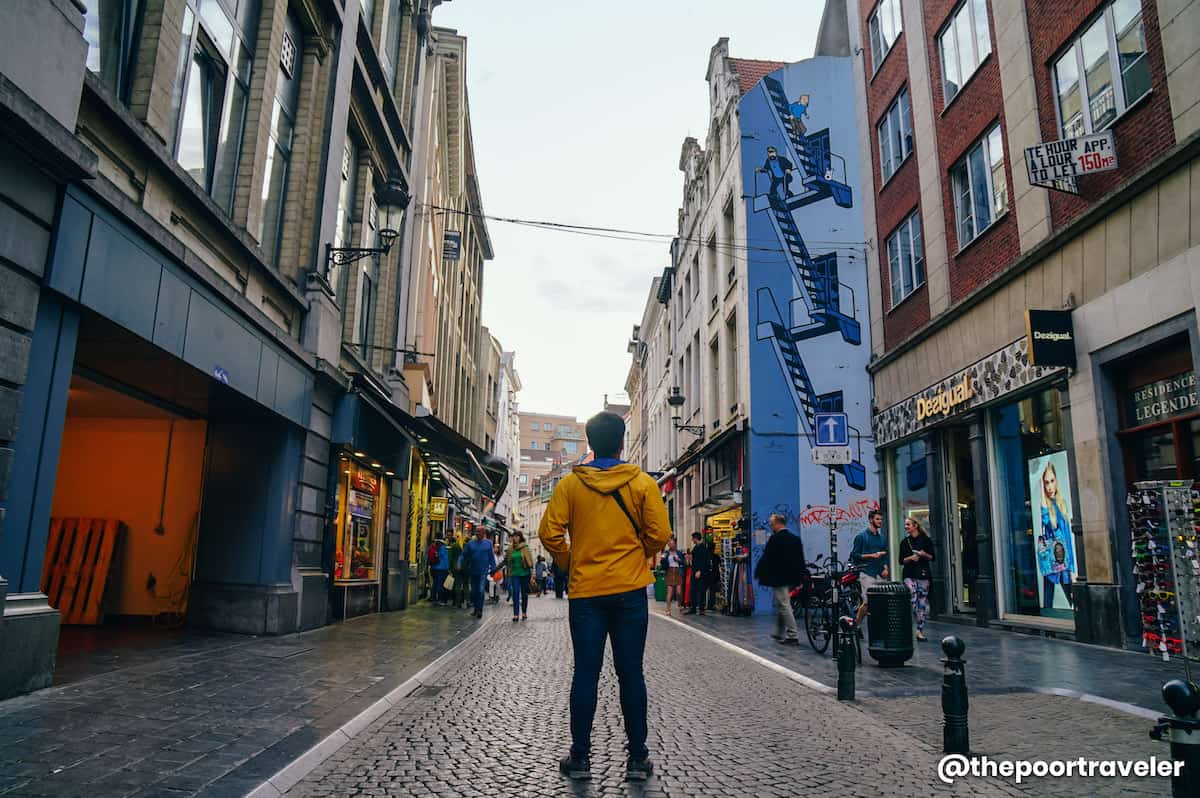Brussels may not be among the first places that come to mind when the topic of traveling to Europe is brought up. Brussels get only 10 million visitors per year, which is still considerable but much lower than the 30 million tourist arrivals that tourism juggernauts like Paris and Rome record annually.
But Brussels is worth checking out, too! As the capital of Belgium, it is a well-developed and progressive metropolis that offers iconic landmarks, convenient transportation systems, and unforgettable experiences. And oh, not to mention the finger-lickin’ fries, mouth-waterin’ waffles, and mind-blowin’ beer!
If you’re planning a Euro tour and considering a stop in Brussels, here are some of the best things to do and places to visit here! In this post, we’re including links to guided tours and tickets for your convenience.
THINGS TO DO
1. Brussels City Tour
Brussels boasts a multitude of storied structures and monuments, most of which are clad in Gothic or Art Deco architectural styles. Some of the notable landmarks are the Grand Place (city hall and guild houses), St. Michael and St. Gudula Cathedral, the Royal Palace, the King’s Castle, and the Congress Column.
Aside from the historical attractions, you can also visit the modern tourist attractions like the Atomium.
You can definitely pull a D-I-Y if you are more comfortable exploring on your own or if you are on a budget. But if you want to get more insights into each attraction, consider joining a guided tour. FREE Walking Tours usually start at the Grand Place and take visitors around the surrounding area to check out nearby landmarks. As is usually the case, although it is free, you’re expected to tip the guide depending on how much you enjoyed the tour.
If you’d rather join a smaller group and pay, the tour below is offering a half-day city tour which takes about three hours. This is inclusive of a multilingual guide. The stops include the abovementioned notable attractions.
2. Belgian Chocolates Sampling
Your Brussels itinerary is not complete without trying the country’s world-famous chocolates! The term Belgian chocolate has become synonymous with the best choco treats in the world. You mention Belgium and more often than not, it will be the first one to pop in mind. (Well, at least in my mind. LOL.) Belgian chocolate is one of the major contributors to the country’s economy and deeply integrated into the culture. There are about 2,000 chocolatiers in the country.
Cacao, the raw ingredient in chocolate-making, is not locally produced but the Belgians managed to own the industry, rivaling the Swiss in producing the best chocolates in the world. The industry dates back to the 17th century but started to flourish as an industry in the 19th century.
Its global reputation started when Belgium invented its own version of praline in 1912. The Belgian version has soft filling wrapped in a chocolate shell, different from the pralines found in France and the United States. Belgian chocolates are said to have higher cocoa content than other producers.
If you want to learn more about the history and the best chocolate shops in the city, you can join a guided chocolate tasting walking tour. Aside from visiting shops and sampling, other guided tours include a chocolate-making workshop in the package. Here are two options we found online.
✅ BOOK CHOCOLATE TASTING TOUR HERE!
✅ BOOK CHOCOLATE TOUR + WORKSHOP HERE!
3. Fries Tasting
The British call ’em chips. Most of us call ’em French fries. But in this part of Europe, where some claim this universally-loved potato snack originated, it is known as frites. And boy do the Belgians love their frites!
It is said that frites started in the fishing settlements along the Meuse River in Belgium. The fisher folks were believed to substitute potatoes for fish during the winter season. According to a National Geographic feature, term “French” fries likely came about during World War I when the Belgians served the fries to the English-speaking troops who associated it with the French language spoken by the Belgian Army.
At its core, fries are very simple: potatoes cut into strips and deep-fried. There are different versions of fries across the globe, varying in thickness, shape, texture, seasoning, and dips. But the Belgians take pride in their double-frying method.
Currently, Brussels has a LOT of fries stalls; the most popular are Maison Antoine, Fritland, Frit Flagey, and Fritkot Bompa. Our team tried the last three. For us, hands down, the best was Fritkot Bompa. And the owner was very charming and warm. He even showed us his tattoo of fries and took our camera so he could film how he fried the potatoes. (He offered. We didn’t ask.) Maison Antoine was closed when we visited.
4. Beer Tours
Raise your glass (or bottles), beer lovers! You’ve set foot in the land of UNESCO-inscribed Belgian beer culture. Judging from the number of beer festivals in the country, you will know that beer is huge here. In fact, the Belgians also incorporated beer in some of its dishes. The country has over 200 breweries — international and traditional — making it one of the top producers of beer in Europe.
The beer brewing history in the country can be traced back to the 12th century. The religious orders were the pioneers of beer brewing in Belgium and had a key role in the evolution of the brewing method through the years. One of the famous beer types in the country is the Trappist beer, produced by monks in, well, the Trappist monasteries.
The majority of beers in Belgium are sold in bottles and special ones are mostly served in their specific glassware.
If you want to know more about the other types of beers in Belgium, the beer-making methods, and the history of beer brewing in Belgium, you can join a guided beer tour. Your professional guide will lead you to the best beer places and even the hidden taverns and oldest pubs. Here are just two of the many options. These are inclusive of beer tastings and beer snacks samplings.
✅ BOOK BRUSSELS BEER TASTING TOUR HERE!
✅ BOOK GHENT BEER + SIGHTSEEING TOUR HERE!
5. Belgian Waffles
The Belgian waffle has established itself as a staple snack in the country. It is not only popular in Belgium but also abroad, like the United States with its own version of the snack and is also served as a breakfast meal.
There are two famous types of waffles in Belgium: Brussels Waffle and Liege Waffle. The larger rectangular-shaped Brussels waffles use beaten eggs as leaveners and are sprinkled with powdered sugar, while the smaller but thicker round-shaped Liege waffles use yeast as the leavener and contain sugar grains. Some waffles in Belgium are considered street food and are eaten with hands.
6. Mussels in Brussels
Considered a poor man’s meal in the past because of the abundance and affordability, but now regarded as a prized ingredient, mussels (moules) have warmed the dining tables of Belgian households, especially in the winter season.
One of the famous mussel dishes in Belgium is the moules-frites, the country’s national dish. To prepare, the mussels are cooked (or steamed) with onions (or shallots), celery, and other fresh herbs in white wine sauce and butter, and finally served with fries.
Other mussel dishes to try are moules à la bière (with beer) and moules à la crème (with cream). If you are pressed for time but want to taste Belgian cuisine staples, you can have the moules-frites, beer, and waffle in one of the restaurants. We had our share at Chez Leon restaurant, just around the Grand Place, and we loved it!
PLACES TO VISIT
7. Grand Place
The Grand Place (Grand Square), also called Grote Markt (Grand Market), is the main square of the city. Its history dates back to the 11th century as an open-air market. It used to be the venue for public executions. Later on, buildings mushroomed around the square, particularly the guild houses.
Strategically located along the commercial road, it became the hub for business and commerce, developing parallel to the rise of merchants and guilds in Brussels.
The Town Hall and the King’s House are the most prominent buildings. This is a UNESCO World Heritage Site; hence, this is one of the key attractions and the most visited in Brussels.
Nearest Train Station: Brussels Central Station
Nearest Tram Station: Beurs Station (Tram 3, 4, 32)
Nearest Bus Stop: Beurs Stop (Bus 33, 48, 95)
Opening Hours: 24/7
Entrance Fee: FREE
8. Palais Royal
Built on the site of the former Palace of the Dukes of Brabant, which was destroyed in the 18th century, Palais Royal’s original structure dates back to the first half of the 19th century. The structure we see today is mostly the product of King Leopold II’s modification projects at the turn of the 20th century.
Today, it serves as the official palace of the Belgian monarchs but not their official royal residence. This is the seat of power where most of the state duties are accomplished, the state’s guests are welcomed and entertained, royal wedding banquets are hosted, and royal interment are held. But it has been open to tourists during the summer season since 1965.
The Palais Royal faces Brussels Park. It features an archaeological site and museum (Coudenberg).
Nearest Metro Station: Trône/Troon Station
Nearest Tram Station: Royale/Koning Station or Palais Station (Tram 92, 93)
Nearest Bus Stop: Troon Stop (Bus N11, 27, 38, 54, 71, 95)
Opening Hours: 10:30 AM – 5:00 PM (Tuesday – Sunday), CLOSED (Monday). The palace tours are available only in summer, usually from the third week of July up to the first week of September.
Entrance Fee: FREE
9. Atomium
Conceived in the 1950s, the Atomium has become one of the most iconic landmarks in Brussels and a national symbol of Belgium. Built for Expo 58 (1958 Brussels World Fair), the Atomium reflects the high regard given to science at the time of conception. It was eventually converted into a museum.
Designed by engineer André Waterkeyn, together with two architects André and Jean Polak, the contemporary functional structure towers over 100 meters, featuring spheres and tubes.
Out of the nine spheres, six can be accessed by the public. These spheres carry temporary and permanent exhibits, while the tubes enclose stairs, escalators, and an elevator (central tube). The lift shuttles tourists to the top sphere which houses a restaurant and an observation deck that presents a 360-degree view of the city.
Nearest Metro Station: Heizel Station
Nearest Tram Station: Heizel Station (Tram 7, 19)
Nearest Bus Stop: Heizel Stop (Bus 14, 83, N18, T7)
Opening Hours: 10:00 AM – 6:00 PM (Friday – Monday), CLOSED (Tuesday – Thursday)
Entrance Fee: €16 (Adult), €14 (Senior), €8.50 (Children, Students, PWDs0, FREE (Children 115cm and below)
This is one of the main tourist attractions in the city, so expect long lines for the tickets. But if you don’t want to wait inline, you might want to check skip-the-line ticket offers online like the one below. This includes admissions not only to the Atomium but also the nearby ADAM – Brussels Design Museum.
10. Notre Dame Du Sablon
The 15th-century Notre Dame Du Sablon is located in the historic center of Brussels, particularly in Sablon (Zavel) district, a short walk past Palais Royal. Its proximity to the nation’s official palace made it a favorite among the nobility and the affluent society.
Its exterior, Gothic in style, commands attention. The interior is equally stunning with stained-glass windows. Some interesting features are the Baroque pulpit, the two Baroque chapels, and the crypt.
Nearest Tram Station: Princesse Clementine Station (Tram 62, 93)
Nearest Bus Stop: Kleine Zavel Stop (Bus 33, N06, N08, N09, N10)
Opening Hours: 9:00 AM – 6:30 PM (Monday – Friday), 10:00 AM – 7:00 PM (Saturday – Sunday)
Entrance Fee: FREE
11. Notre-Dame de Laeken
Commissioned by King Leopold I, the Notre-Dame de Laeken was built in memory of his wife, Queen Louise-Marie. The construction started in the mid 19th century and finished in the early 20th century. Located near the official royal residence, Royal Castle of Laeken, the neo-Gothic church hosts the Royal Crypt where the tombs of the Belgian royal family are housed.
Aside from the crypt, the church also features three ornate spires. The tombs of some of the prominent figures in Belgium are found just a stone’s throw away from the church in the Laeken Cemetery.
Nearest Tram Station: Petit Sablon (Kleine ZavelStation) Station (Tram 92, 93)
Opening Hours: January 2:00 PM – 5:00 PM (Tuesday – Saturday); February to November 2:00 PM – 5:00 PM (Tuesday – Sunday); CLOSED (Mondays and December). The opening schedule for the Royal Crypt varies per day but on Sundays, it’s open from 2PM to 5PM.
Entrance Fee: FREE
12. Manneken Pis
This statue of a little boy urinating into a fountain spews volumes not just about the city’s art but also sense of humor. It is one of the most visited and most photographed statues decorating the city.
There are several legends surrounding the statue but one of the most famous is the victory of the two-year-old Duke Godfrey III of Leuven and his men against their enemies with the help of his urine during the battle.
The original bronze statue dates back to the 17th-century and is displayed on the second level of the Brussels City Museum. The one flocked by tourists at the original site, a short walk from the Grand Place, is a replica. To manage your expectation, this statue has a height of about two feet. Yep, it’s pretty small, but that doesn’t stop tourists from flocking around it.
Don’t be surprised if you see the statue in a costume or uniform because it’s a normal occurrence. It actually has more or less 900 outfits.
The exact location is at the intersection of Rue de l’Étuve and Rue du Chêne. Use Google Maps if you plan to walk from Grand Place.
Nearest Bus Stop: Manneken-Pis Stop (Bus 33) or Grand Place Stop (Bus 33, 48, 95)
Opening Hours: 24/7
Entrance Fee: FREE
13. Autoworld
Autoworld is located on the southern portion of the 30-hectare Cinquantenaire Park in the European District of the city. The museum was launched in the 1980s, showcasing a collection of about 250 kinds of vehicles.
If you are a car enthusiast or just curious about the evolution and history of automobiles, especially those from the late 19th century up to the late 20th century, this will be worth your time. It has a huge collection of vintage models, as well as iconic racing cars and some modern cars!
Nearest Train Station: Merode Station
Nearest Tram Station: Merode Station (Tram 81)
Nearest Bus Stop: Gauls/Gaulois Stop (Bus 22, 27, 61, 80, N06) or Merode Stop (Bus 27, 61, 80, N06)
Opening Hours: Weekdays 10:00 AM – 6:00 PM (April – September), 10:00 AM – 5:00 PM (October – March); Weekends 10:00 AM – 6:00 PM (all year round)
Entrance Fee: €12 (Adults), €10 (Senior), €9 (Student, PWD), €5 (6-11 y/o), FREE (Below 6 y/o)
Book your ticket in advance online!
14. Mini-Europe
The European Union has no official capital, but Brussels is where you’ll find the official seats of several of its bodies including the European Commission, Council of the European Union, European Council, and European Parliament. Hence, it is widely regarded as EU’s de facto capital.
So it’s just apt to find an attraction that represents something from all of Europe in Brussels. If you want to see the subcontinent’s iconic landmarks in a couple of hours, you can bet on Mini-Europe to deliver with fun and cuteness.
The park boasts about 350 miniature models of Europe’s famous landmarks and interactive installations recreating the important events and moments like the fall of the Berlin Wall, the rocket launching of Ariane V, and the Mt. Vesuvius eruption.
You can explore on your own or get the service of a guide to further explain the displays. The park is located near the Atomium.
Nearest Metro Station: Heizel Station
Nearest Tram Station: Heizel Station (Tram 7, 19)
Nearest Bus Stop: Heizel Stop (Bus 14, 83, N18, T7)
Opening Hours: The schedule varies per month but it usually opens at 9:30 AM or 10:00 AM and closes at 6:00 PM or 8:00 PM. The park is closed from first week of January to second week of March. Again, the schedule might change without prior notice, so better check before you visit.
Entrance Fee: €16.50 (Adult, Senior), €12 (Children, Students, PWDs0, FREE (Children 115cm and below)
You can book your ticket prior to your visit online!
15. Choco-Story
Choco-Story is a small museum dedicated to chocolate-making. Discover how the chocolate came to Europe by tracing back its roots to the Mayans and Aztecs who cultivate cocoa trees. From there, you will learn how cocoa captured the heart and sweet tooth of the Europeans and how the beans are made into chocolates.
A master chocolatier will also demonstrate how to prepare pralines before you are treated to a delightful chocolate tasting! The museum is located near two popular attractions — the Manneken Pis and one of the Tintin Murals.
Nearest Bus Stop: Manneken-Pis Stop (Bus 33) or Grand Place Stop (Bus 33, 48, 95)
Opening Hours: 10:00 AM – 6:00 PM (Monday – Sunday). Last entry is at 5:00 PM.
Entrance Fee: €9.50 (Adult); €8.50 (Senior, Students); €6.50 (6-11 y/o); FREE (5 y/o and below)
Currently, the museum only accepts online purchase of tickets. This is inclusive of admission, audio guide, and demonstrations, and chocolate tasting.
16. Tintin Murals
Created by the Belgian cartoonist Georges Remi (Hergé), The Adventures of Tintin became one of the most loved comic series in Europe. It skyrocketed to fame in the 20th century and has been published in several languages, reaching hundreds of millions of readership and following.
The map of Brussels is dotted with a number of Tintin-themed murals. You can start your mural hunting not far from the Manneken Pis along Rue de l’Étuve, right after Choco-Story and before you reach Rue du Lombard. If you are coming from the Grand Place going to Manneken Pis, you will spot this mural a few meters before you reach the statue.
Mural Hunting Map: You may get/purchase the mural map from the tourist office located at Grand Place.
17. Le Botanique
Opened in 1984, Le Botanique was the former orangery of the National Botanic Garden of Belgium until its relocation to the outskirts of the city in 1958.
The botanical glasshouse remains and was transformed into a cultural complex, hosting art exhibitions, theater acts, and concerts. It has a restaurant that opens during lunch hours. The vast green space fronting the Le Botanique is now called the Botanical Garden of Brussels.
Nearest Metro Station: Botanique Station
Nearest Tram Station: Botanique Station (Tram 92, 93)
Nearest Bus Stop: Botanique Stop (Bus 61)
Opening Hours: Front Desk 11:00 AM – 6:00 PM (Regular Days), 11:00 AM – 10:00 PM (Shows or Concerts); Exhibitions 12:00 PM – 8:00 PM (Wednesday – Sunday)
Fees/Tickets: The ticket prices vary per show or exhibit.
18. Musee Royaux Des Beaux Arts
A Royal Decree was made in 1845 to make a museum that will keep and exhibit the works of deceased and living Belgian artists; thus, the Royal Museums of Fine Arts of Belgium rose from the ground near the Royal Palace of Brussels (Palais Royal).
This complex nestles a group of six museums that carry a total of over 20,000 works of arts — paintings, drawings, and sculptures. Some of the masterpieces date back to as early as the 15th century, laying down the history of fine arts in Belgium. Contemporary arts are also included in the collection. Here are the six museums within the complex: Magritte Museum, Fin-de-Siècle Museum, Oldmasters Museum, Modern Museum, Meunier Museum, and Wiertz Museum.
Nearest Tram Station: Royale/Koning Station (Tram 92, 93)
Nearest Bus Stop: Royale/Koning Stop (Bus 27, 33, 95, N11)
Opening Hours: 10:00 AM – 5:00 PM (Tuesday – Sunday), 11:00 AM – 6:00 PM (Weekends), CLOSED (Mondays and some holidays)
Fees/Tickets: The ticket prices vary per museum. It’s €10-15 for adults, €8-10 for seniors, €3-5 for students and PWDs, and FREE for children and youth under 19 years old. FREE admission for Meunier Museum and Wiertz Museum.
19. Parc Du Cinquantenaire & Triumphal Arch
Parc du Cinquantenaire (Park of the Fiftieth Anniversary), also called Jubilee Park, was commissioned by King Leopold II to celebrate the 50th anniversary of the nation’s independence.
The 19th-century pentagon-shaped park covers 30 hectares of land outside the city center in the European District. The extensive public park is decked with floral gardens and fountains. It is also home to three museums: Autoworld, Art & History Museum, and the Royal Military Museum. The centerpiece is the 20th-century Triumphal Arch topped with a bronze sculpture of four horses and a woman carrying the flag.
You can access the top of the arch for free from the National Military Museum and be rewarded with a breathtaking view of the city.
Nearest Train Station: Merode Station
Nearest Tram Station: Merode Station (Tram 81)
Nearest Bus Stop: Gauls/Gaulois Stop (Bus 22, 27, 61, 80, N06) or Merode Stop (Bus 27, 61, 80, N06)
Opening Hours: 24/7
Entrance Fee: FREE
20. Palais de Justice
After its completion in 1883, Palais de Justice was recorded to be the biggest building in the world. Today, covering an area of almost three hectares, it is one of the largest and most monumental courthouses in Europe. It is one of the most notable landmarks in Brussels, being visible from almost anywhere in the area due to its high location in the Marollen district.
It was designed by the Belgian architect Joseph Poelaert, who also drew the blueprint for Notre-Dame de Laeken. The two floors and the basement are all open to the public. Some of the notable features are the massive neoclassical doors, the marble staircase, the main entry hall, and the dome.
Nearest Train Station: Louise Station
Nearest Tram Station: Poelaert Station (Tram 92, 93)
Nearest Bus Stop: Poelaert Stop (Bus 33)
Opening Hours: 8:00 AM – 5:00 PM (Weekdays), CLOSED (Weekends and holidays)
Entrance Fee: FREE
Top Hotels & Apartments in Brussels

- B&B Be In Brussels. Check Rates & Photos! ✅
- B&B X2Brussels. Check Rates & Photos! ✅
- B&B Villa 36. Check Rates & Photos! ✅
- Pillows City Hotel Brussels Centre. Check Rates & Photos! ✅
- Pillows Grand Boutique Hotel Place Rouppe Brussels. Check Rates & Photos! ✅
- EU Guesthouse. Check Rates & Photos! ✅
- 9HOTEL CENTRAL. Check Rates & Photos! ✅
Search for more Brussels Hotels!
Edited by Asta Alvarez
2021 • 3 • 30
